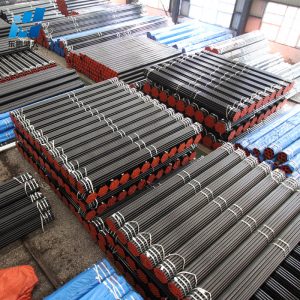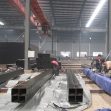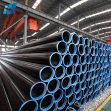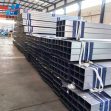Steel production analysis in the second half of the year
Steel production of China hollow section tube is a critical indicator of economic activity and plays a pivotal role in various industries worldwide. As we delve into the second half of the year, it is essential to analyze and understand the trends and factors influencing steel production. This article provides an overview of steel production in recent months, examines key factors shaping the industry, and discusses potential implications for the global economy.

Current Steel Production Trends:
In the first half of the year, the steel industry experienced a steady recovery from the impacts of the global pandemic. Many countries witnessed a rebound in steel demand as economic activities resumed and infrastructure projects gained momentum. However, as we enter the second half of the year, several factors are influencing steel production trends.
Raw Material Costs:
One significant factor affecting steel production is the surge in raw material costs. Prices of iron ore and coking coal, essential inputs for steel production, have witnessed substantial increases due to supply disruptions and strong demand of structural steel pipe. Higher raw material costs pose challenges to steelmakers, impacting their profitability and potentially leading to adjustments in production levels.
Energy Prices and Environmental Regulations:
Rising energy prices, including electricity and natural gas, can add to the production costs of steel manufacturers. Furthermore, stringent environmental regulations aimed at reducing carbon emissions and promoting sustainability have prompted steelmakers to invest in cleaner technologies and adopt energy-efficient practices. Balancing these factors while maintaining production levels can be a complex challenge.
Infrastructure and Construction Demand:
The demand for steel in infrastructure and construction projects continues to be a significant driver of mild steel tube production. Government investments in infrastructure development, particularly in emerging economies, can stimulate steel demand. Additionally, the housing sector and commercial construction projects contribute to the overall steel consumption.
Global Trade Dynamics:
Steel production is influenced by global trade dynamics, including trade disputes, tariffs, and protectionist measures. These factors can disrupt supply chains, impact steel prices, and create uncertainties for steel producers. Monitoring trade policies and their potential impact on steel production is crucial for industry stakeholders.
Analyzing steel production trends in the second half of the year provides valuable insights into the overall economic landscape. Factors such as raw material costs, energy prices, infrastructure demand, and global trade dynamics shape steel production levels of black iron steel pipe. Understanding these trends and their implications enables policymakers, industry stakeholders, and investors to make informed decisions and navigate the evolving steel market effectively. As steel production continues to evolve, close monitoring of these factors will be crucial for a comprehensive understanding of the global economy.
Tel: +86 18202256900 Email: steel@fwssteel.com










